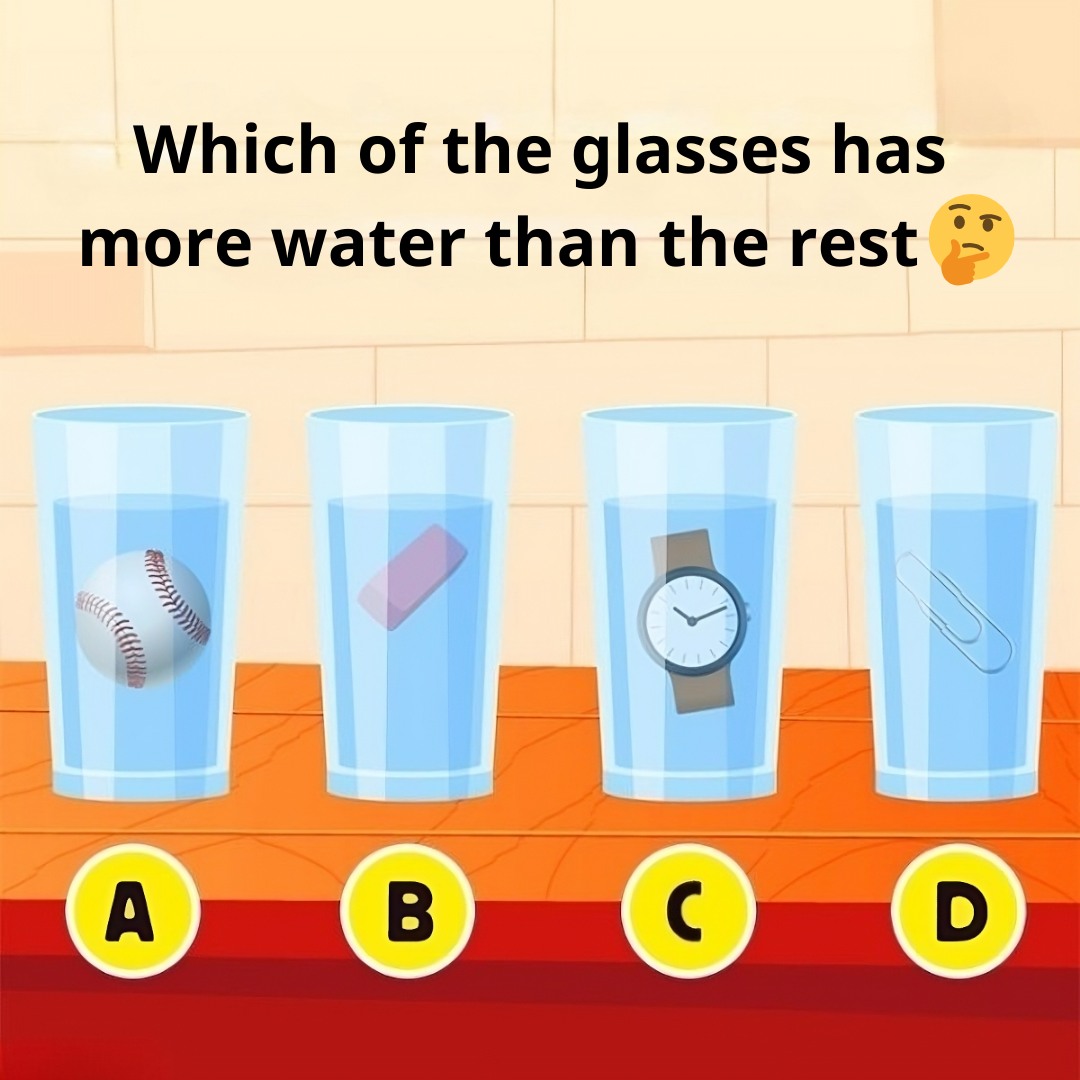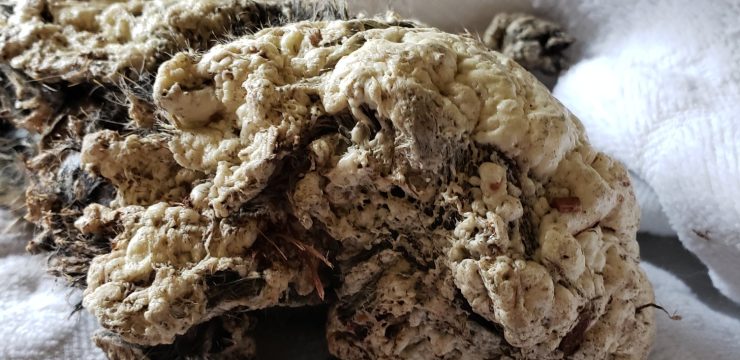Ready for a quick brain workout? Imagine four glasses, each filled to the same visible water level. Inside these glasses are different objects: a baseball, an eraser, a wristwatch, and a paper clip. At first glance, you’d think they all have the same amount of water, right? But here’s the catch: the objects submerged in each glass change everything. So, the real question is: which glass actually contains the most water?

It’s time to put on your thinking cap and dive into this puzzle! Let’s break it down step-by-step and figure out which glass holds the most water. It’s all about looking beyond what’s immediately visible and applying some logical thinking.
Common Mistakes People Make
Before we get to the answer, let’s consider a few common pitfalls people often stumble into when solving puzzles like this.
- Ignoring Object Volume: Many people assume that because the water levels appear equal, all the glasses must contain the same amount of water. What they forget is that the objects inside the glasses displace some of that water.
- Only Focusing on the Water’s Surface: Another mistake is focusing only on the water’s surface level without considering the submerged objects. Different objects have different volumes, which affects how much water is actually left in the glass.
- Overlooking Object Size and Density: Objects that are larger or denser will take up more space and push out more water. This means that the glass with the largest object will end up containing the least amount of actual water.
Now that we’ve covered the typical mistakes, let’s move forward and solve the puzzle.
Solving the Puzzle: A Step-by-Step Guide
Look at the Objects
Each glass contains one of four objects: a baseball, an eraser, a wristwatch, and a paper clip. These items differ in size and shape. The bigger the object, the more water it displaces, leaving less water in the glass. The smaller the object, the less water it pushes out, which means more water remains.
Understanding Water Displacement
Here’s a bit of science: when you submerge an object in water, it displaces a volume of water equal to the volume of the object. So, the larger the object, the more water is pushed out. This means that a glass with a large object, like a baseball, will have less actual water remaining than a glass with a smaller object, like a paper clip.
Identifying the Smallest Object
Among the items in the glasses, the paper clip is clearly the smallest. Because it takes up the least space, it displaces only a tiny amount of water compared to the larger objects like the baseball, which pushes out much more water.
The Final Answer
The glass with the paper clip has the most water. Why? The small size of the paper clip means it displaces very little water, leaving more water in the glass than the other, larger objects. When you remove the objects from each glass, you’ll see the water levels drop according to how much water each item displaced. The glass with the smallest drop in water level—the one with the paper clip—contains the most water.
Why Is This Puzzle Important?
This brain teaser helps develop critical thinking skills by encouraging you to consider all the details—not just what’s visible at first glance. It’s a great way to practice analytical problem-solving, as it requires you to factor in the science of water displacement and think about things from a new perspective.
Puzzles like this are excellent for boosting your cognitive abilities. They help sharpen your logical reasoning and improve your observation skills. Plus, they’re fun and engaging, making them perfect for challenging yourself or others.
Challenge Your Friends!
Did you enjoy this puzzle? If so, why not share it with your friends and see if they can figure it out? It’s a fantastic way to encourage some healthy brain exercise and foster problem-solving discussions. Plus, everyone has their own approach to solving puzzles, so it can be interesting to see how others think!

The more brain teasers like this you try, the sharper your mind will become. So next time you’re faced with a tricky question, you’ll be better prepared to tackle it with confidence. Keep practicing, challenge yourself, and don’t forget to have fun along the way. Happy puzzling!





